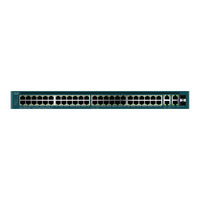Cisco ESW2-550X-48 Manuals
Manuals and User Guides for Cisco ESW2-550X-48. We have 1 Cisco ESW2-550X-48 manual available for free PDF download: Administration Manual
Cisco ESW2-550X-48 Administration Manual (548 pages)
ESW2 series Advanced Switches
Table of Contents
-
-
-
-
System Files52
-
Active Image59
-
-
-
Overview76
-
Stack Ports91
-
System Modes96
-
-
-
SNTP Modes120
-
-
LLDP and CDP140
-
Configuring LLDP141
-
LLDP Overview142
-
LLDP Overloading159
-
-
Configuring CDP161
-
-
-
Overview191
-
Smartport Types192
-
Smartport Macros195
-
Auto Smartport198
-
Error Handling201
-
-
-
Vlans230
-
Creating Vlans235
-
GVRP Settings241
-
VLAN Groups242
-
Voice VLAN246
-
-
-
STP Flavors266
-
-
-
MLD Snooping295
-
-
Overview302
-
-
Ipv4 Interface305
-
Ipv4 Routes309
-
Ripv2310
-
Access List310
-
Arp310
-
ARP Proxy311
-
-
Dhcpv4 Snooping313
-
Dhcpv4 Relay313
-
-
-
DHCP Server325
-
DHCP Options325
-
-
Dhcpv4 Server328
-
Network Pool328
-
Static Hosts330
-
Address Binding332
-
-
-
-
Ipv6 Interface335
-
Ipv6 Tunnel339
-
Types of Tunnels339
-
-
-
Ipv6 Prefixes345
-
Dhcpv6 Relay352
-
Domain Name353
-
DNS Settings354
-
Search List355
-
Host Mapping356
-
-
-
-
Overview358
-
Configuring RIP364
-
-
-
Defining Users383
-
Key Management395
-
SSL Server404
-
-
-
SYN Protection427
-
SYN Filtering429
-
ICMP Filtering431
-
IP Source Guard432
-
-
-
ARP Defaults438
-
-
-
-
-
Passwords443
-
Import Keys444
-
-
Before You Begin447
-
Common Tasks447
-
-
Introduction458
-
SSD Management459
-
-
SSD Rules459
-
SSD Properties464
-
Configuring SSD473
-
SSD Properties473
-
SSD Rules474
-
-
-
-
-
Qos Modes495
-
Qos Workflow496
-
-
Qos Basic Mode509
-
-
Chapter 26: SNMP
528-
-
Snmpv1 and V2529
-
Snmpv3529
-
SNMP Workflow529
-
Supported Mibs531
-
-
Model Oids531
-
SNMP Engine ID532
-
Advertisement
